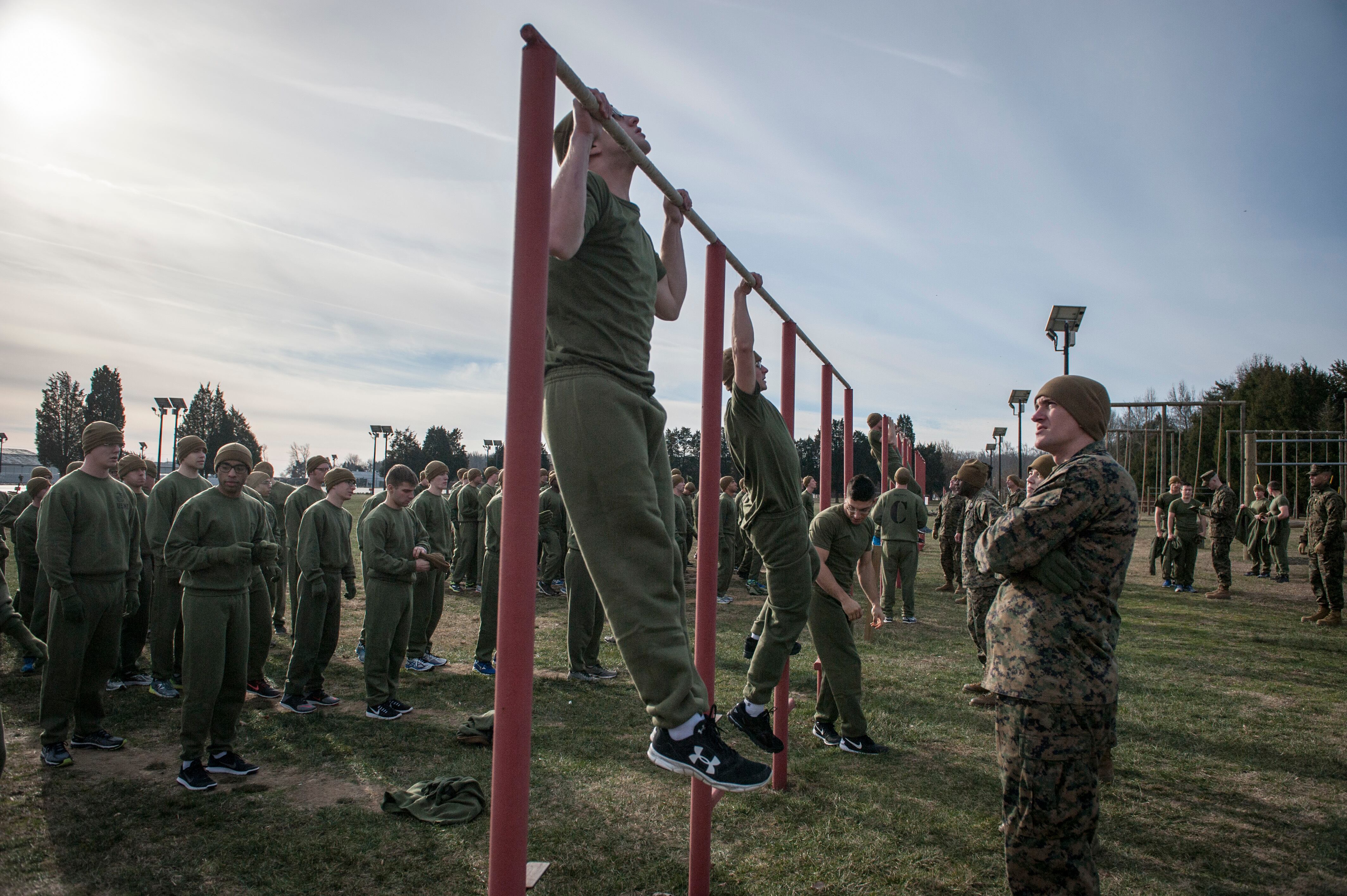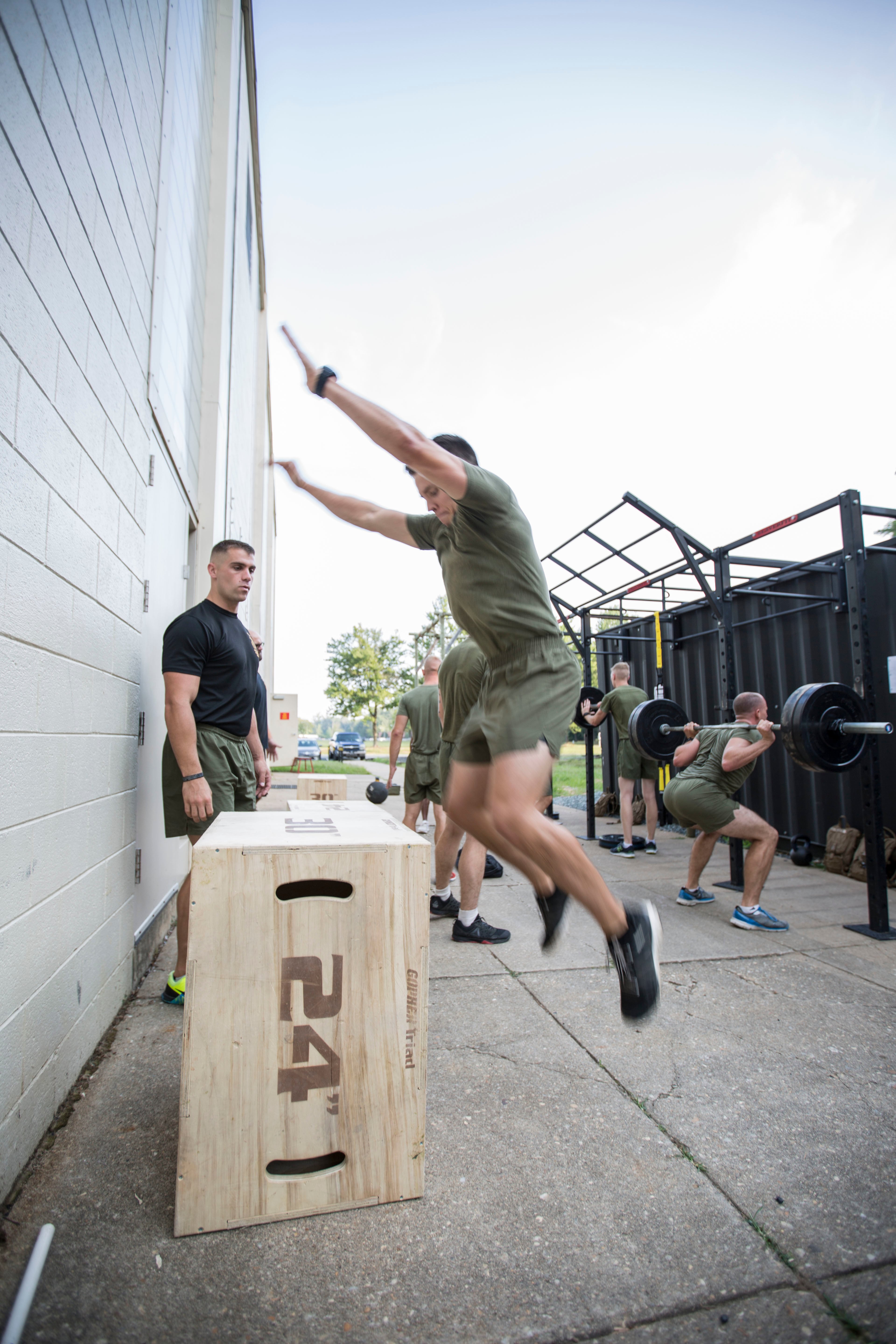As the Marine Corps pushes its physical standards to focus beyond the physical fitness test , key positions such as athletic trainers and force fitness instructors are both the overseers and ambassadors for a new, total-package approach.
While some units have access to an athletic trainer and fitness instructor, the Corps is not yet at full capacity.
In 2020 COVID-19 events curtailed some of the work by a year or more to reach the full operational capability, but that has been reset and the Marines expect to have a full contingent of both positions by mid-2023.
RELATED

That would mean nearly doubling the existing athletic trainer number from 35 to 66 across the force. Those are full-time, civilian trainers with either a master’s degree or doctorate in the field.
And it would mean adding 120 fitness instructors in the next two years, while still retaining those positions currently filled that may be lost through job transfers or those exiting the service.
FFI candidates must be a sergeant or above in full duty status able to score both a first class physical fitness test and combat fitness test score, meet height/weight standards and have at least one year left on their service contract.
The FFI training bestows an additional military occupational specialty once completed.
Athletic trainers have been available at entry-level training sites such as recruit training, Officer Candidate School and The Basic School since 2003. The expansion of the athletic trainer program began in 2018 with a dozen positions at six units across the three Marine Expeditionary Forces.
The FFI program is newer, having just launched in 2018. As of late 2020, the Corps counted 780 FFIs in its ranks.
The instructors attend a six-week course where they learn anatomy and physiology as well as biomechanics and kinesiology fundamentals. They target specific training methods for programing, injury prevention and recovery methods.
The Corps’ human performance division runs both programs, officials said they are aiming for 900 FFIs to reach their full operational capability across the service. That will mean a dedicated FFI at every company or squadron-sized element officials said.
Gunnery Sgt. Miguel Placido currently serves as the FFI for 1st Battalion, 11th Marine Regiment, an artillery unit at Camp Pendleton, California.
Placido first hear of the FFI program in 2016 shortly after then-Commandant Gen. Robert B. Neller issued a white letter on the program.
Neller dubbed the new instructors the commander’s “subject matter expert” on physical fitness and sports-related injury prevention.
But the top Marine wasn’t looking for a one-size-fits all approach to fitness. While the FFI would help units improve their PFT and CFT scores, they were also there to help with programming specific to that unit.
That’s one place where Placido had experience. Artillery Marines are expected to do a lot more heavy lifting in the course of their jobs than many other MOSs.
At the time he went through the FFI course, Placido was working as an instructor at the artillery school at Fort Sill, Oklahoma. Part of that MOS-specific requirement included carrying a 155 mm artillery round a distance of 50 meters from one truck to another, they also had to do body drags of 25 meters, sprint with a full combat load and other tasks.
His first approach was to take new Marines fresh from Marine Combat Training, only a few months in the Corps, to ensure they met and passed the artillery assessments. Then he built physical fitness programs tailored to the Marine to make them more “combat enabled” well-rounded Marines, he said.
A big part of that, Placido told Marine Corps Times, was injury prevention.
Placido has since returned to the fleet, where he serves as battery gunny in 11th Marines. After nearly five years of the program in effect, the veteran staff noncommissioned officer can see a difference from when he joined the Corps in 2003.
“You can see a change in physical activities, they start from boot camp, they know what the program is about, they know they’ve gotta warm up then go to workout then to recovery,” he said. “The program has helped out a lot in that aspect.”
In his position he mostly advises PT leaders down at the platoon and squad level, helping them tailor workouts to their unit or individual Marines.

That can mean cutting down a run time for an upcoming PFT or improving deadlift mechanics.
But what’s been a dramatic improvement is the shared information he has through a Marine Corps-specific network of other FFIs online.
That allows the instructors to share workout programs, ask questions and test out their experiences. For example, he’s gotten solid PT regimens for swimming improvement for Marines who might want to try out for MARSOC or Recon.
Beyond the fitness standards, Placido and other FFIs also work with the athletic trainers.
Trainers Ben McGrath and Mick Thompson with Marine Aircraft Group 14 at Cherry Point, North Carolina, talked with Marine Corps Times about their role in reducing injuries, monitoring fitness work and getting injured Marines back to work.
Gunnery Sgt. Chase Gilkey coordinates with both the trainers for MAG-14 physical fitness.
McGrath had a background in college sports, mostly basketball, but had an interest in working with the military. In late 2018 he took the job with MAG-14. Thompson had a similar background and had worked with McGrath before he joined the group.
“One of the struggles was getting Marines to admit that they were hurt,” Gilkey said.
And the directive from the commanding officer at the time was to get as many injured Marines as possible healthy. Once that was in place, the trio worked on educating Marines about injury prevention.
That meant a lot of visits to unit PT sessions and various training courses on site.
McGrath ran the CFT himself and got a decent score his first time, 282 out of a possible 300. His background helped him understand how demanding the test was and how even slightly sloppy technique could result in injury.
He noticed Marines commonly doing warmup and stretching before their PFT but not the CFT.
The trainers visited every unit, met with every commander and sergeants major to emphasize the importance of the warmup and recovery.
McGrath said some of the change in attitude started at the commander level. If they helped an officer or senior SNCO recover, those Marines soon began preaching the benefits of the program to their junior Marines.
They reached out to injured Marines and the command drafted a policy letter requiring immediate assessment of those who were injured to start rehabilitation immediately. Before some had been waiting three to four weeks to begin rehab.
Those efforts have paid off, changing a mentality that would ignore or minimize an injury to one that would report it and try to get it fixed before it got worse.
“It’s a shift in the way of thinking. ‘I’m not useless, I’m just injured,’” Gilkey said. “There’s a time and place to suck it up and there’s a time to say, ‘hey, this really hurts.’”
Todd South has written about crime, courts, government and the military for multiple publications since 2004 and was named a 2014 Pulitzer finalist for a co-written project on witness intimidation. Todd is a Marine veteran of the Iraq War.




